
The ‘Woodiest’ Town on the West Coast
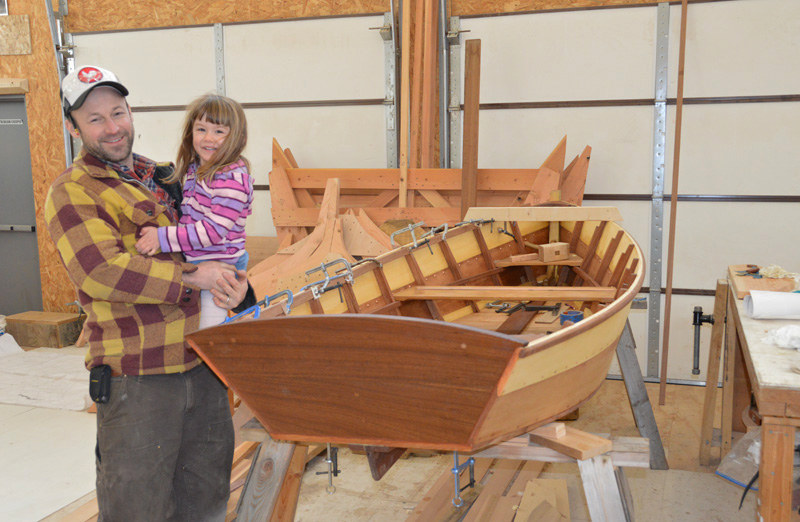
©2016Latitude 38 Media, LLC
What’s the wooden-boat-lovin’est town on the West Coast? From what we’ve seen, it has to be Port Townsend, WA, a Victorian-era port town perched along the Strait of Juan de Fuca. Wooden craft of all sorts are built and maintained here — you’ll find everything from museum-quality sailing dinghies and rowboats to stout commercial fishing vessels tough enough to brave the rough and rowdy waters of the Alaskan fishing grounds. In addition to splendid sailing yachts maintained in Bristol condition, the area is home to two of the West Coast’s premier wooden boatbuilding facilities: The Northwest Martitime Center and the Northwest School of Wooden Boat Building.
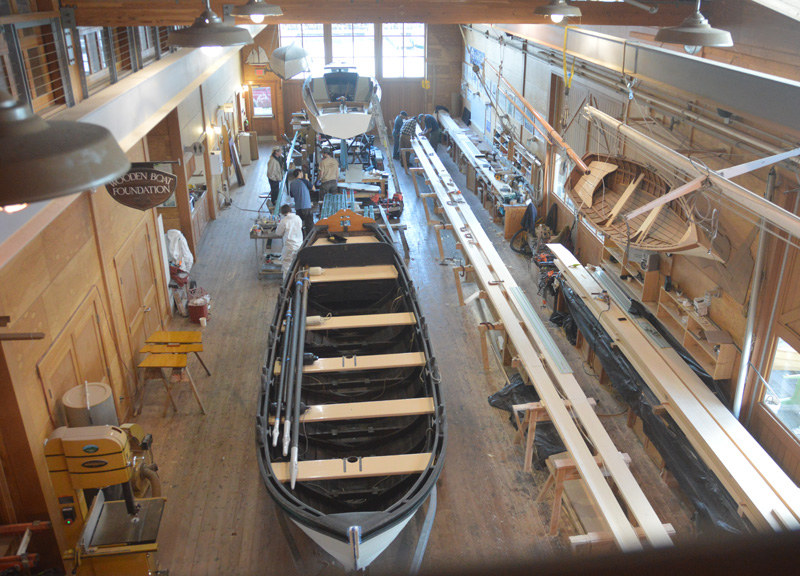
©2016Latitude 38 Media, LLC
The Maritime Center is perched at the water’s edge at the west end of Port Townsend’s picturesque main street, which is lined with ornate, late-19th-century architecture. Open to the public year-round, it allows you to observe accomplished shipwrights practicing their craft, or take hands-on classes in everything from boatbuilding to navigation. (These are the folks that put on the Race to Alaska, by the way. R2AK starts June 23, with a $10,000 prize for the winner.)
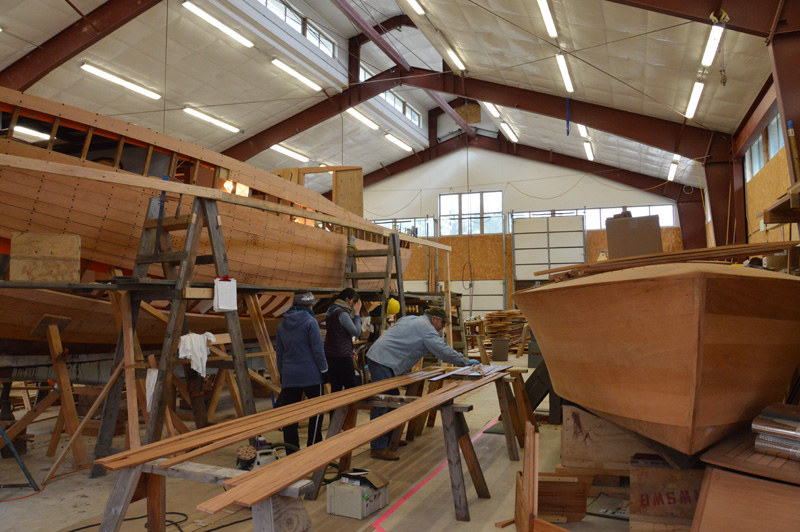
©Latitude 38 Media, LLC
About 10 miles down the road at Port Hadlock you’ll find NSWBB, one of the premier wooden boat-building schools in the country. Long-established, well-funded, and fully accredited, its top-notch facilities attract students from all over the country and beyond. We stopped by to visit former Bay Area boatwright Jody Boyle, who moved north from Sausalito with his family last year and is now a NSWBB instructor. Hands-on courses there prepare students for professional careers in all sorts of wooden boat construction and maintenance. Among the many boats they’re currently building is a cold-molded two-man submarine commissioned by a fan of the school.
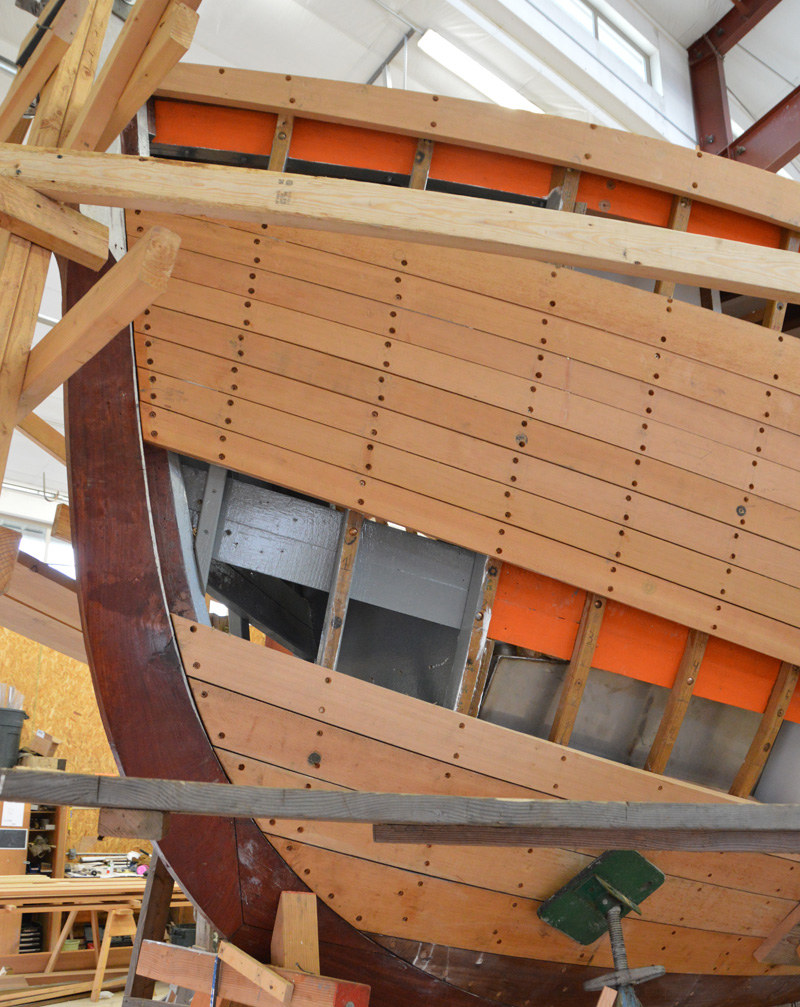
If you love wooden boats, you owe it to yourself to visit these impressive facilities next time you’re in the area. An ideal time would be September 9-11, while the 40th annual Wooden Boat Festival is taking place.
Panama Canal’s Third Lane Repaired
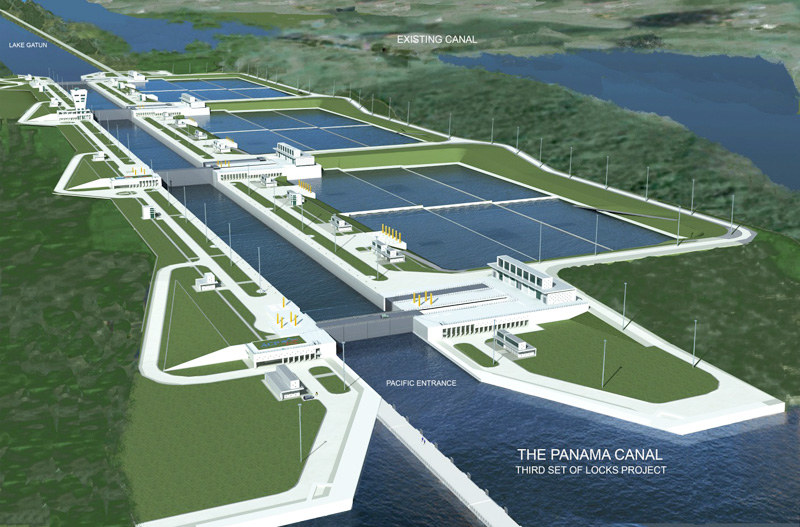
©2016Latitude 38 Media, LLC
It’s not surprising that a construction project as challenging as the Panama Canal’s expansion would see substantial delays and cost overruns, but it was a bit shocking when cracks were discovered last summer in the solid concrete ‘sill’ beneath at least one rolling lock gate installed in the Canal’s new Third Lane. According to the Panama Canal Authority (ACP), however, the problem has now been corrected and the new locks are undergoing testing in anticipation of being open for business in late June.
According to a recent Reuters report, the Panamanian government anticipates a 30% increase in Canal revenues due to the expanded capacity — an additional $1.4 billion annually. Completion of the costly project will allow transit between the Pacific and Caribbean for ships that are roughly a third wider than the current Panamax size standard — and that can carry 2.5 times more shipping containers (TEUs) than their predecessors.
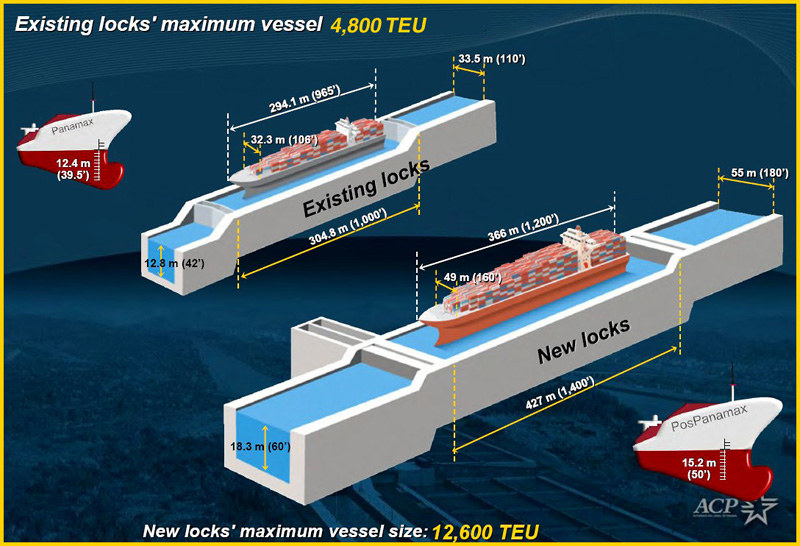
©2016Latitude 38 Media, LLC
But because the new Post-Panamax standard facilitated by the Third Lane will not be able to handle the world’s largest cargo ships, ACP head Jorge Quijano has said that his organization is now considering construction of an even more ambitious project that would accommodate these gargantuan New Panamax vessels that measure up to 1,400 feet long by 180 feet wide! Meanwhile, there hasn’t been much buzz lately about the proposed Nicaraguan canal, which some critics feel has little chance of being built due to funding problems with its original Chinese backers.
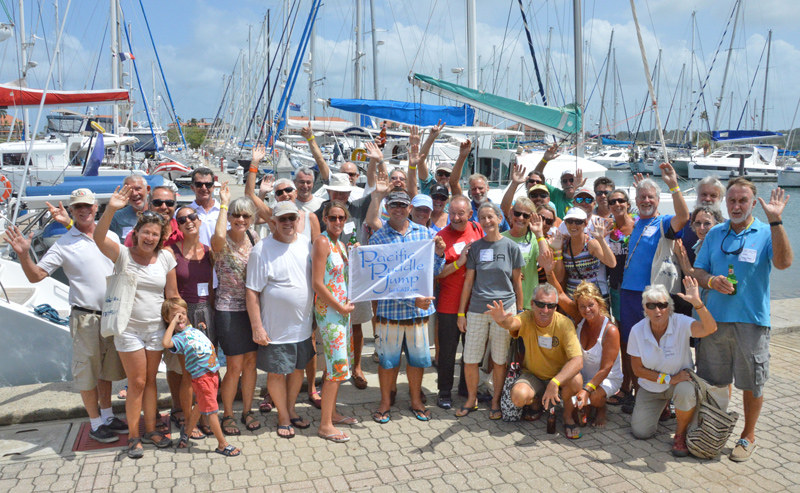
©2016Latitude 38 Media, LLC
We’ve got Panama on our minds these days, as we’ll be helping our partners from Tahiti Tourism host a Tahiti Sendoff Party for many of this year’s Pacific Puddle Jumpers on Sunday, March 6, at the Shelter Bay Marina on the Caribbean side of the Canal (10 a.m. to 4 p.m.). If you’re in that area, and are heading across the ‘puddle’ this season, you won’t want to miss this free, highly informative program and party. As in years past, all crews will be interviewed and photographed for an article in Latitude 38 — a chance to capture your ’15 minutes of fame’.
A similar function will take place in Mexico, February 29, at the Vallarta YC, at Nuevo Vallarta’s Paradise Village Resort (3 to 6 p.m.). All registered 2016 Puddle Jumpers are welcome.
Vallejo Race Change-Up
Subscribers to the YRA of S.F. Bay newsletter learned of changes to the organization’s biggest race of the year, the Great Vallejo Race, earlier this week. The only change that affects the race itself is the intention to use downwind ratings for PHRF divisions in Saturday’s race to Vallejo Yacht Club on April 30. The subject line of the email reads, "You asked… we listenend!" Other than the PHRF committee, we’re not sure who asked for downwind ratings.
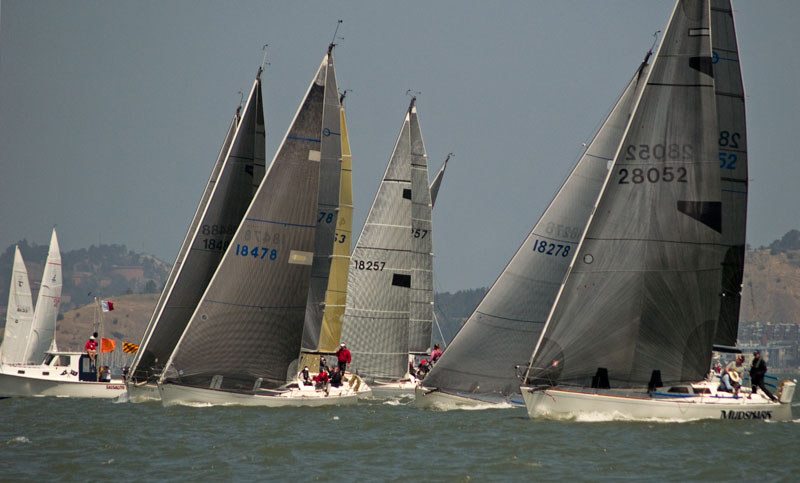
©Latitude 38 Media, LLC
After a short beat to a weather mark off the starting line north of Treasure Island, most of the next leg is usually a combination of spinnaker reaching and running. But sometimes the wind comes too far forward in the middle of San Pablo Bay and kites come down. The final leg, from the Carquinez Strait to VYC, is almost always a white-sail reach. So the race is never purely downwind.
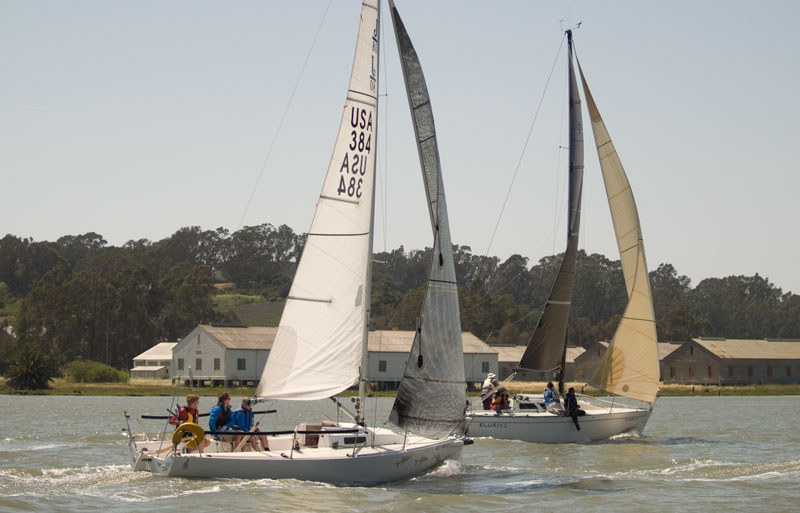
©Latitude 38 Media, LLC
"What if there’s a northerly?" asked one skipper. "Will they still use downwind ratings?" We invite further comment here. To see how your boat stacks up with a downwind rating, see www.yra.org/PHRF/ncphrf_base_rates.html.
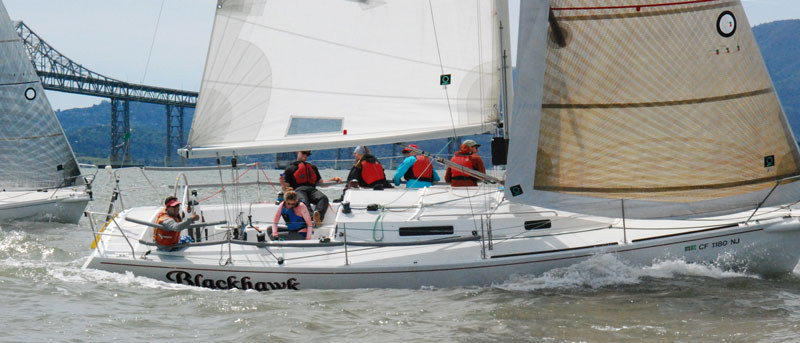
©Latitude 38 Media, LLC
Other changes will be less controversial. "We’ll be scoring overall winners for each fleet, based on their Saturday and Sunday placings under regular PHRF," writes the YRA. "Many of you have asked for overall trophies, and this year we are giving them to you!" More trophies equals more happy sailors, for sure.
Unlike donkeys, racers prefer drinks to carrots. So the ‘carrot’ the YRA is using to encourage early sign-ups is drink tickets rather than root vegetables. The Express 27 fleet was the first one design to get five entries; PHRF also has five, but drink tickets are still up for grabs for the first five boats to sign up for the Sport Boat Division, the Non-Spinnaker Division, the Short-Handed Division and the Multihull Division. But wait, there’s more: "Be the first one-design fleet to get 10 boats to sign up and we’ll give you 10 T-shirt vouchers, one for each of the first 10 boats that sign up. Become the largest fleet to sign up, and we’ll have a special prize for each skipper in your fleet!"
The structure of Saturday’s shoreside activities changes from year to year but it’s always a big party, worth sailing to and staying for. Food vendors will return after a hiatus last year. Food will be available from 3:30 to 7:00 p.m. Fish & chips, prawns, calamari, oysters, and BBQ ribs, chicken, pulled pork sandwiches or mushroom burgers, plus sides, will be available. Entertainment will start by 4 p.m. and the headlining band will take the stage at 7 p.m.
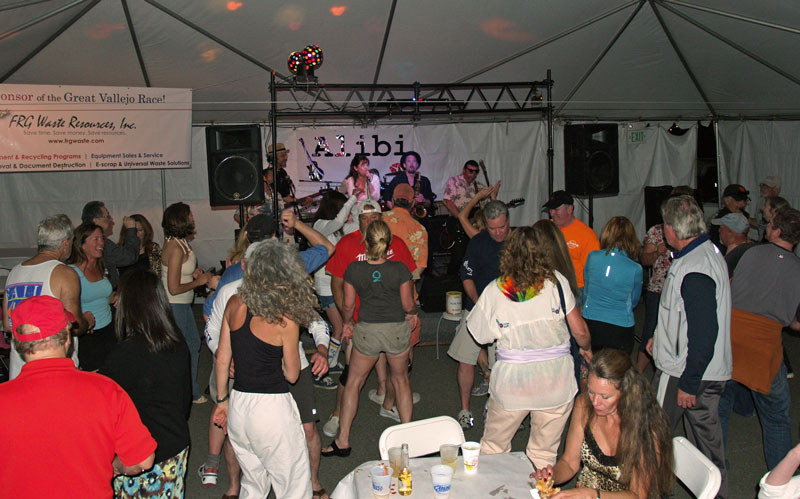
A (usually upwind) race from Vallejo to San Rafael using regular PHRF ratings will round out the weekend on Sunday, May 1. Registration is open on Jibeset.
